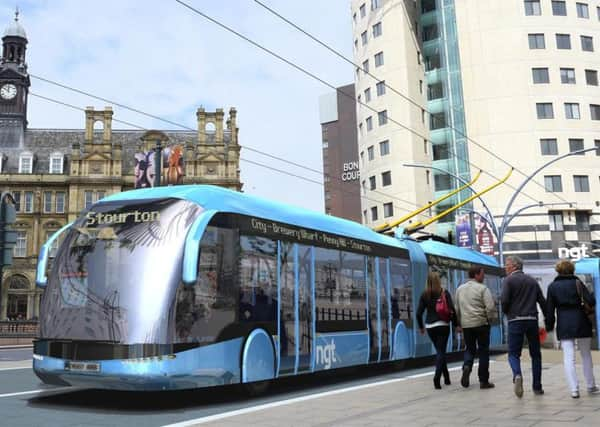YP Comment: Stuck in slow lane '“ 30 years of transport failure in Leeds.


The fallout needs to be seen in this context. Nearly 30 years after plans were first floated to build a state-of-the-art public transport network as trams returned to cities across the North, Leeds is no further forward after squandering more than £70m of public money in various legal costs over Supertram before it was ditched in 2005 and replaced with a trolleybus plan now shunted into the sidings. Just think how many buses could have been built with this money.
Would this have been tolerated in London – or any other metropolitan city in Britain or Europe? No – and here is the evidence. As Supertram was hitting the buffers in 2005 because costs had risen from a projected £100m in the early 1990s to an unviable £1bn, the Crossrail Bill was passing through Parliament paving the way for a new railway to be built across London. Close to completion, it will be named the Elizabeth Line in the Queen’s honour and a second route is now planned. This tale of two cities says it all.
Advertisement
Hide AdAdvertisement
Hide AdLeaving aside the debate about infrastructure investment being skewed in London’s favour, the experience of Supertram and trolleybus in Leeds – now one of the UK’s most congested and polluted cities – offers three expensive object lessons in how not to conduct a transport policy.
First, schemes on this scale need to benefit the maximum number of residents to meet Government cost-benefit criteria and previous Ministerial insistence on a trolleybus-type scheme was, with the benefit of hindsight, unhelpful. However, planning inspector Martin Whitehead said the proposed trolleybus routes would not “improve connectivity” between Leeds city centre and the areas of highest unemployment. He also lamented the failure to consider “more suitable” routes for a rapid transit system – a damning indictment of Leeds City Council and West Yorkshire Combined Authority’s lack of leadership. This is very ominous if these bodies have more transport powers under any devolution deal.
Second, projects must be properly costed from the outset. If Sheffield, Manchester, Nottingham and Newcastle can do it, why can’t Leeds? Third, public confidence is key. Neither plan commanded sufficient support, hence the protracted public inquiry into the trolleybus plan and its detrimental impact on the natural environment.
If this was London, the Government would have intervened and provided clearer direction. Why not Leeds? The city does not have time on its side. Stuck in the slow lane without a 21st century public transport network, businesses cannot be blamed if they invest in those areas which have planned for the future. Yes, Ministers have graciously allowed Leeds to retain the £173m set aside for trolleybuses, but not only is this sum woefully insufficient for the city’s needs, but there’s no guarantee that it will be spent wisely when history is in danger of repeating itself with the proposed tram-train up a steep hill to a fog-bound Leeds Bradford Airport. Has nothing been learned in 30 years?
Defending York: Foss Barrier flood report revealed
Advertisement
Hide AdAdvertisement
Hide AdSTAFF at the Environment Agency could not have been in a more invidious position when they had to decide whether to open the Foss Barrier at the height of York’s floods. Did they do nothing, in the hope that the river levels would recede, or did they open the barrier in the knowledge that this would see countless homes and businesses flooded but spare the city from an even greater catastrophe?
Little could have prepared them for this moment and it is clear that EA officials acted in the best interests of the whole of York when they opened the barrier and provided some areas with an additional 18 hours of invaluable respite. Although this report will rest uneasily with those property owners who thought they would be immune from flooding if the Barrier had remained closed, spare a thought for the EA staff on the night of December 26 – they, too, have to live with the consequences of this fateful decision.
What this review does demonstrate is the need for proper maintenance at all times – officials on the fateful night were also contending with a loss of electricity because of a repairs backlog. It also highlights the importance of new flood defences. Though a £17m upgrade to the Foss Barrier is underway, it shouldn’t have taken this disaster for the Environment Agency and Defra to get their collective acts together.